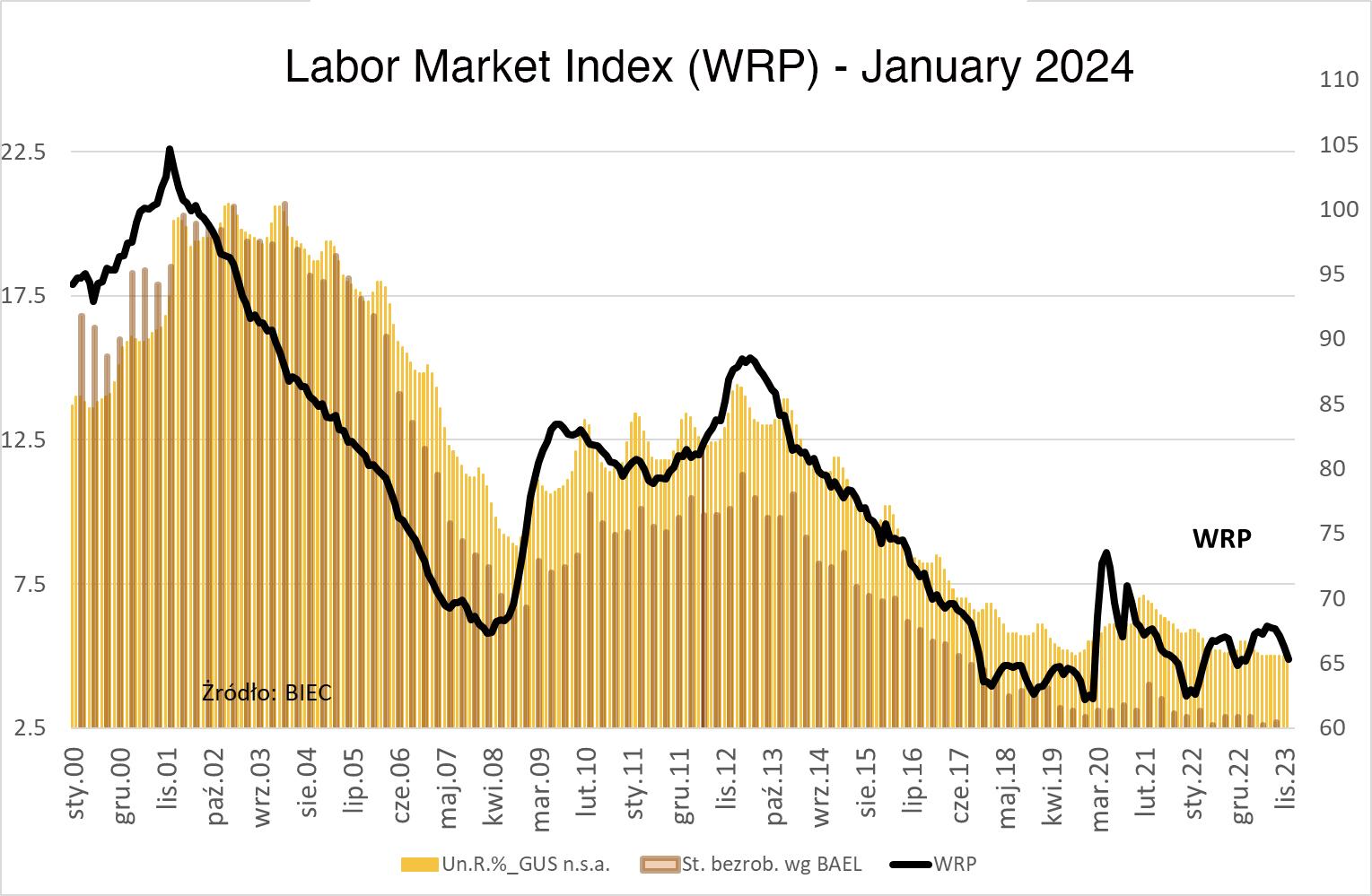Poland: Low unemployment highlights structural problems in the labour market
The Labour Market Index (Wskaźnik Rynku Pracy - WRP), which provides advance information on future changes in the size of unemployment in January this year, decreased by 1 point compared to the previous month. This is the fifth consecutive month of decline. Over the longer term, i.e. from mid-2022 onwards, the indicator remains at a similar level. The figures for registered unemployment (around 5%) and unemployment according to the LFS (between 2.5% and 3%) show similar stability. There are no indications that the unemployment rate is likely to rise sharply, abstracting from its short-term variations, mainly of a seasonal nature. The main problem of the Polish labour market at present is low labour supply and structural mismatch, which is likely to worsen as growth trends and a revival in investment, especially those related to modern technologies, become entrenched.
Of the seven components of the WRP, two are currently moderately working towards a possible increase in the unemployment rate. These are business managers' forecasts of changes in the size of the workforce and the number of people deregistering from job centres due to taking up employment. Invariably from mid-2019 onwards (with the exception of isolated revisions), the proportion of firms planning to reduce the number of employees outweighs those assuming an increase in employment. More than 80% of the manufacturing companies surveyed believe that their current headcount is at the right level, only 5% want to increase it and more than 12% intend to reduce it in the near future.
A consequence of reduced hiring plans among employers is the poor supply of vacancy announcements. After a spring upturn in the construction industry last year, when there was a periodic increase in the inflow of job offers reaching the employment offices, the second half of the year was characterised by a systematic decline. A similar trend was registered by the Job Offer Barometer (BOP), which is based on observations of the number of job offers appearing on internet portals. The BOP has been declining steadily for the past five months, and the negative trend, broken only by minor corrections, has continued for a year and a half.
The number of people who de-registered from labour offices due to taking up employment decreased by 4% in December last year compared to November. In the longer term, the trend towards a decreasing number of de-registrations from unemployment due to employment has been observed since autumn 2020, which clearly shows that the stock of unemployed registered at the district labour offices has long since ceased to act as an intermediary between entrepreneurs seeking employees and jobseekers.
The total amount of unemployment benefits paid out was unchanged on a monthly basis, and the number of unemployed people dismissed for reasons attributable to companies decreased by 1%.
Source: BIEC









